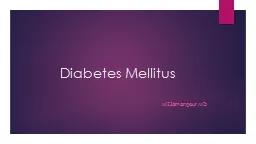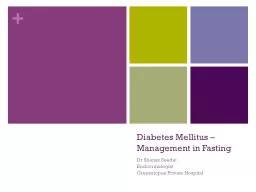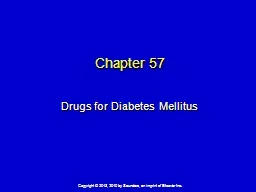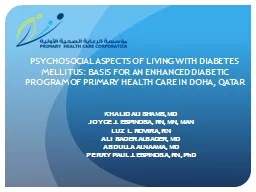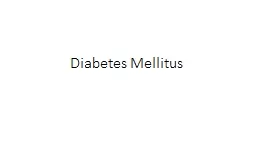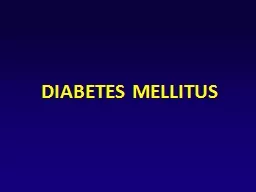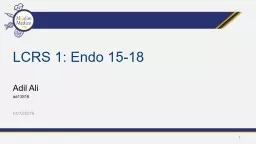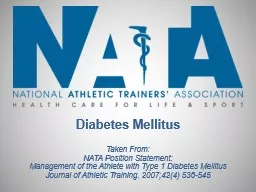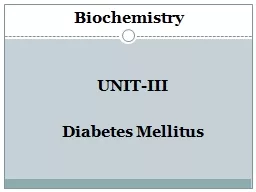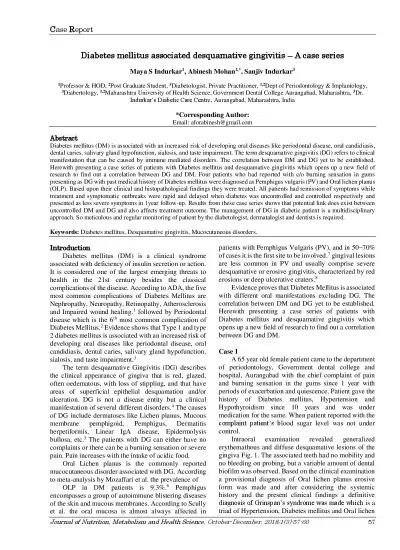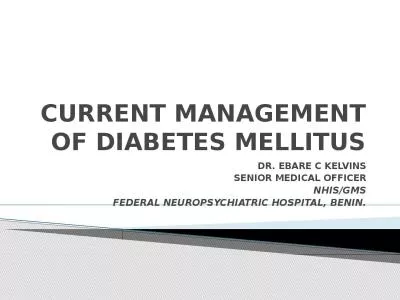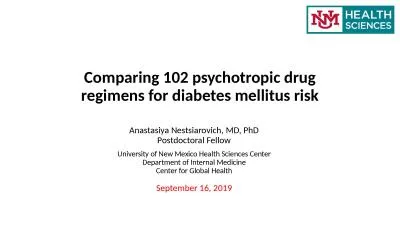PPT-Diabetes Mellitus MZ. Zamanpour
Author : Hardrocker | Published Date : 2022-08-01
Md Definition amp Diagnosis 1 Fasting serum glucose concentration 126 mg dL 2 a random venous plasma glucose 200 mg dL with symptoms of hyperglycemia 3
Presentation Embed Code
Download Presentation
Download Presentation The PPT/PDF document "Diabetes Mellitus MZ. Zamanpour" is the property of its rightful owner. Permission is granted to download and print the materials on this website for personal, non-commercial use only, and to display it on your personal computer provided you do not modify the materials and that you retain all copyright notices contained in the materials. By downloading content from our website, you accept the terms of this agreement.
Diabetes Mellitus MZ. Zamanpour: Transcript
Download Rules Of Document
"Diabetes Mellitus MZ. Zamanpour"The content belongs to its owner. You may download and print it for personal use, without modification, and keep all copyright notices. By downloading, you agree to these terms.
Related Documents

